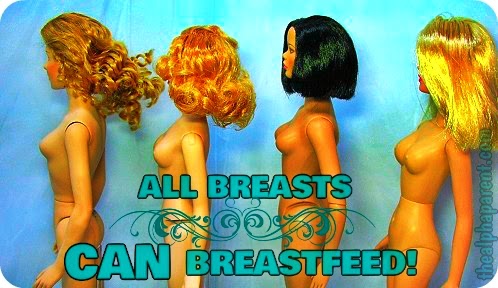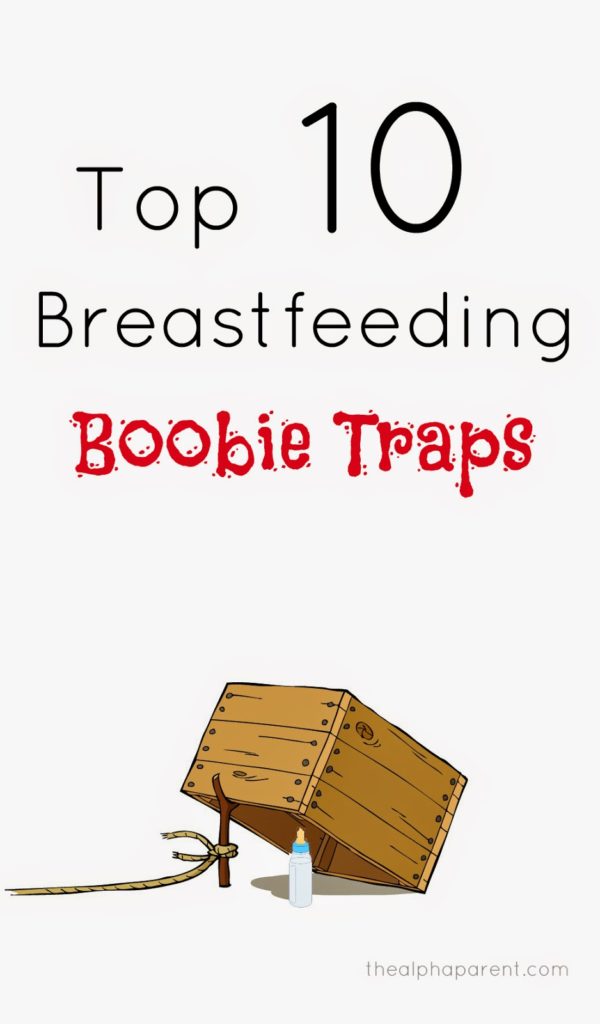
1.STEALTH MIDWIVES.

No sooner has your baby been pulled from your privates and the midwife is brandishing a bottle. She is heading in your baby’s direction and will launch as soon as your back is turned. This can be particularly so if you had a c-section. There is seldom reason that a mum who gave birth via c-section cannot have a successful breastfeeding relationship, although her milk may take slightly longer to come in. I urge expectant mums to read this info on caesarean delivery and buy a postcard from Lactivist to display on your baby’s hospital cot. That’ll tell the midwife where to stick her bottle.
2.THE RED-BOOK POLICE.

(Or yellow-book, if you’re living in the some areas of the UK). Health visitors treat the Red Book as gospel. Any deviation from the lines on the book’s weight chart and the breastfeeding mum will be ordered to top-up with formula. And woe betide you get a health visitor like mine, who was convinced that the line baby is on at birth is the same line they should be on at 9 months (for more about health visitors click here). This unfortunately common obsession with charting babies against each other is not just a fetish of health visitors. GPs, paediatricians, midwives and even breastfeeding counsellors all worship the Red Book as a way of over-protecting their arses, instead of discerning the health of each child by looking at their overall development. My advice is to locate your local breastfeeding support group. La Leche League has many throughout the UK and beyond.
3.MOTHER IN LAW.

Or even your own mother for that matter. Chances are she didn’t breastfeed and so sees your determination to breastfeed as public criticism of her parenting. This is bad new for your breastfeeding success. A study of nearly 1,400 U.S. and Australian women found that breastfeeding help and encouragement from friends and family was more important than advice or support from health professionals (Queensland University of Technology 2010). Your mother’s attempts at being ‘helpful’ such as continuously asking if your baby is “getting enough” can be particularly disheartening when you have a fussy baby who cries frequently. You may start to wonder yourself whether they are indeed getting enough. But it is important to realise that babies cry for a variety of reasons, including boredom, discomfort, overtiredness, or simply desire of their own voice. Instead of reaching for formula, hold your baby close and nurse. Furthermore Mothers in Law may pressure new mums to allow Granny to look after baby for long periods so they can ‘bond’ with it. A nursing mother’s milk supply benefits from having baby close to her. Being separated from your baby for long periods can interfere with nature’s supply and demand process. Tell Granny she’ll have to wait.
4.YOUR HUSBAND.

What no! How can your husband possibly be a boobie trap? After all by breastfeeding you are freeing him from any responsibility for his child’s nutrition for at least 6 months. What husband would possibly want to interfere with that? Well men will do almost anything for an easy life; and at the beginning breastfeeding is seldom easy. There’ll probably be tears and frustrations. So it’s not unusual for even the most pro-breastfeeding men to subtly mention the f-word (formula). Give him evils and stand your ground.
5.LACTOPHOBIC CULTURE.

Not only do we live in a formula culture, we also live in a society that can be described as ‘lactophobic’ (disgust at lactation). Many mums are scared to nurse in public so they hide away in segregated “breastfeeding rooms” or turn to bottles. As a result breastfeeding is seldom a public affair which in turn maintains its atypical reputation as well as perpetuating the myth that breasts are purely sexual. Brake this vicious cycle by putting boob on the menu when you’re out and about. It may help your confidence to join a Flashmob for your first public feed. You’ll be in good company.
6.GINA FORD.
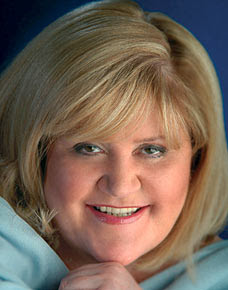
As a baby’s needs change constantly they should be given frequent, unrestricted access to the breast. The constitution of a mother’s breastmilk changes day by day, hour by hour to fulfil her baby’s changing physical, neurological, and emotional needs. For instance, when a baby goes through a growth spurt they nurse more frequently. Mum’s body responds to this by increasing milk production to meet baby’s new requirements. Scheduling feeds (for instance, restricting feeds to every four hours) satisfy an adult’s need for complete control over the process of parenting, but they do not satisfy an infant’s need to be nurtured. Because breastfeeding is built on mutual trust, feeding schedules sabotage breastfeeding success. Schedules can reduce your milk supply and compromise your baby’s health. They upset the delicate balance of supply and demand. As popular parenting website Baby Centre coined, “The best breastfeeding schedule should be your baby’s decision!” But do professionals recognise this crucial fact? Not likely. Health visitors are big fans of scheduling, as are mothers in law, but The Bitch of scheduling is Gina Ford, a 52-year-old self-taught maternity ‘nurse’ (read: nanny) with no children of her own. Her methods involve forcing newborns into rigid timetables of feeding and sleeping. Looks like Gina missed the memo that babies aren’t zoo animals. Furthermore, babies don’t understand the concept of meal planning. As far as they are concerned, when hunger strikes, this is a frightening threat to their survival; And because a baby’s stomach is relatively small, hunger can strike quite frequently, particularly in the early months (or as I call it, the relentless fourth trimester!) Gina would advise you to sit through potentially hours of screaming, distressed baby. I would advise you to feed. Moreover, scheduled mealtimes teach babies to ignore their body’s hunger signals, which could prove dangerous for their future health. Ignore Ford, and watch for your baby’s hunger cues (rooting and sucking on fingers) then place him straight to the breast. Your baby, and your eardrums, will thank you for it.
7.BOTTLES.

The pressure placed upon a new mum to introduce bottles is immense. Our culture has an ingrained warped belief that a man-made plastic reproduction of a breast is more sociable and more convenient than Mother Nature’s design. Relentless cleaning, sterilising, and lugging about versus lifting your top? Go figure. Moreover, feeding a young baby with a bottle can hinder breastfeeding as baby may prefer the faster flow of milk provided by a bottle (note: this is also responsible for increasing a child’s risk of obesity in later life). The different technique used for sucking a bottle teat can cause babies to have difficulty latching-on and sucking at the breast, which will in turn interfere with the mother’s milk supply. Eventually baby may refuse the breast altogether. Even the so-called “Closer to Nature” bottles don’t flex in the mouth the way a human breast does. These, and other bottles designed to mimic human breasts, are simply domes with longer tube-like nipples attached. However when a baby breastfeeds, it takes the areola into its mouth, not just the nipple. If you must use a bottle (for instance if you’re returning to work), here are some excellent breastfeeding-friendly bottle tips. Or if your baby is over 4 months of age, it may be better to feed them with a spoon or plastic beaker.
8.DUMMIES.
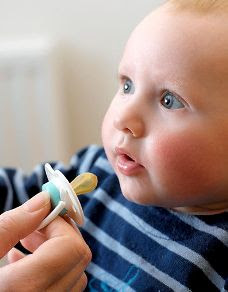
Similar to bottles, dummies can cause a baby to confuse their sucking technique as dummies require a different type of sucking to breastfeeding. “Confusion can occur after just one exposure to a bottle or dummy” (Rubin. S). Moreover, dummies can obscure a baby’s hunger cues and thus lead to less time spent at the breast. This interferes with mum establishing a solid milk supply. Avoid giving a dummy until at least 6 weeks to allow time for breastfeeding to become established and the 6 week growth spurt to pass (remember, growth spurts are temporary, even if they do leave you wanting to hacksaw your breasts off and place them in your baby’s cot). A lesser known fact is that some babies who use dummies are more prone to oral thrush which can be transferred to mum’s nipples (I have experienced this myself and it ain’t pretty). Thrush often occurs because dummy use can cause the insides of a baby’s mouth to be overly moist and cracking, which provides an ideal environment for yeast to grow. If you’re interested in the dummy debate, you’ll love my article: Dummies and Social Class.
9.THE NURSERY.

Putting baby to sleep alone in the nursery not only increases their risk of cot death, it’s also a pain in the arse for your breastfeeding relationship. Newborns are not designed to sleep for more than a couple of hours at a time. Their stomachs are tiny and consequently they wake frequently for nutrition. Confining baby to the nursery means that several times a night mum has to drag herself out of her warm bed, into her baby’s room and dump her ass on a rocking chair where she may sit nursing for up to an hour. Alternatively, sleeping in the same room as baby (co-sleeping) makes breastfeeding easier for both parties. A word of advice though, screw moses baskets! I spent the first 6 months of my baby’s life with my arm hanging over the edge of the bed, dangling into her moses basket. Hello carpal tunnel! Instead I advise that you purchase a bedside bassinet. It can be slotted onto the side of your bed and because it has one side removed, mum and baby are within arms reach. When baby gets older they can help themselves to a midnight snack without their mum even noticing.
10.THE BREASTPUMP.
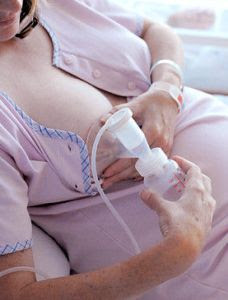
A foe disguised as a friend, the breastpump may seem like an ally of the nursing mother. Many are advertised as supporters of equality which allow dad to take some of the strain. However, apart from encouraging bottle use, breastpumps undermine many mothers confidence in their milk supply. While electric breastpumps tend to do a better job than their manual sisters, the best breastpump of all is your baby. Most mothers do not let down well with the breastpump – it is hard, cold and mechanical, and gives you none of the stimulus that your warm, living baby does. It’s unsurprising that a plastic man-made device will never be as competent at extracting milk from the human breast as a human baby. However many new mums, and ashamedly professionals, believe that the breastpump can be used to gauge the effectiveness of a mother’s milk supply. It comes as no surprise that the most common reason mums give for abandoning breastfeeding, is that they thought their milk supply was insufficient. Commonly a mum will spend 30 minutes attached to a breastpump and obtain a measly 3oz for her troubles. All so dad can have a go feeding? Does that sound like equality to you? Let dad change nappies, do shopping, make cuppas, plump pillows. For the time it takes to fill a bottle using a breastpump it would have been faster and easier to simply put baby to breast. What is this obsession with allowing every Tom, Dick and Harry to feed baby anyway? Baby care is multifaceted. Feeding is but one aspect of it. Furthermore, the US Food and Drug Administration has noted several adverse affects of breastpump use, including tissue damage, infection, pain and soreness and contamination of the pump. Pathogens cling to breastpump equipment and although breastmilk antibodies might help combat this risk, it would be safer to avoid complicated tubes and parts. Moreover, Lang (2008) has suggested that hand-expressed milk might be better quality than pumped milk. Fat proportions may be influenced by the style of expression.





